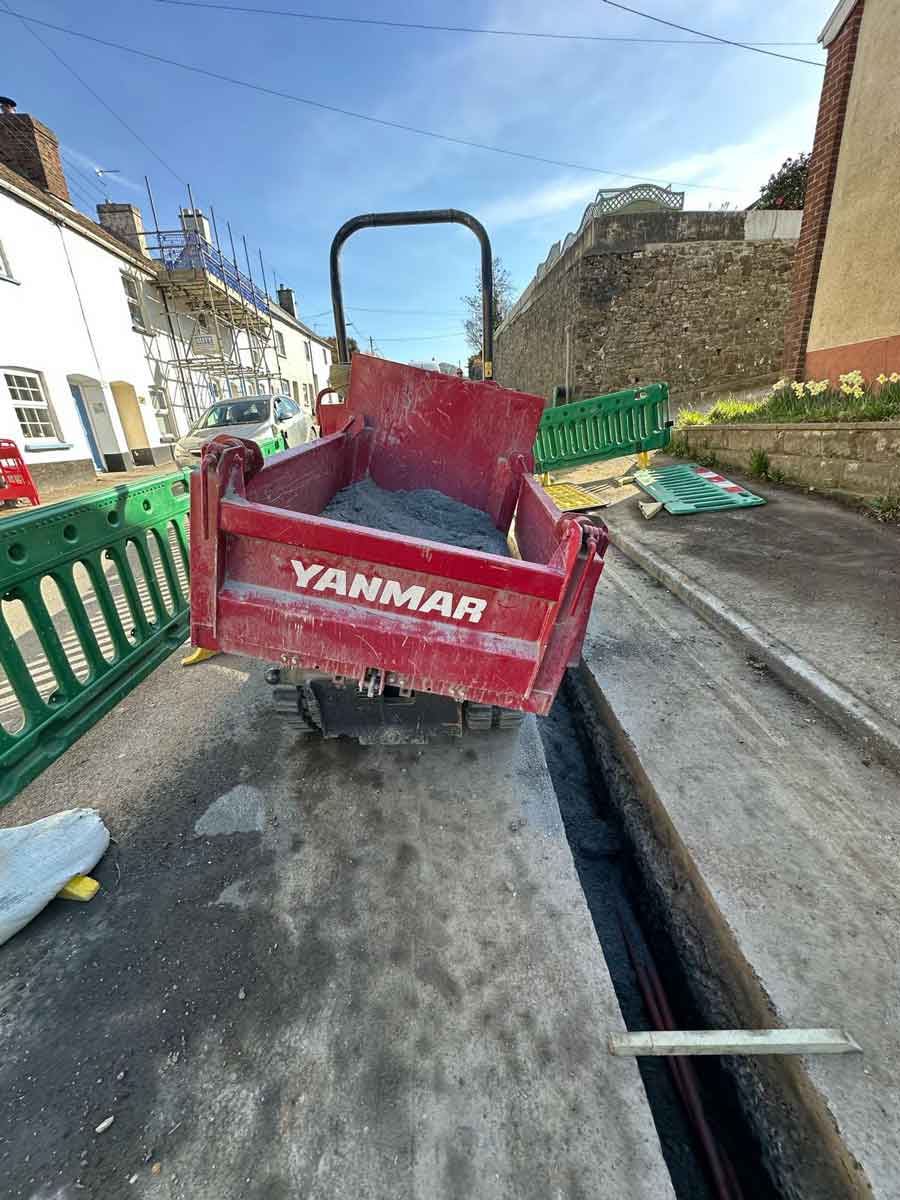Wheel Loader Roundup: Let’s Look at Four Lineups and What’s New in the Market
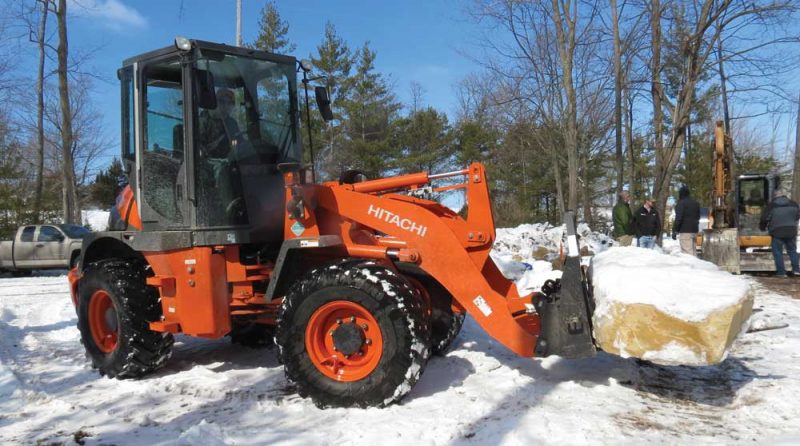
Compact wheel loaders continue to make waves here in North America, so much so that the market for these under 100-hp machines is approximately 5,000 units per year. Thanks to their size, comfort, maneuverability, efficiency and safety, all sorts of crews are finding the value in these machines.
“Compact wheel loaders are a great solution for customers working in a variety of applications, including landscaping, agricultural material handling, general construction, site development and snow removal,” says Grant Van Tine, product marketing manager of compact wheel loaders at John Deere Construction and Forestry. “Compact wheel loaders are powerful machines for moving heavy loads of material, especially when working in tight conditions. They have high transport speeds and offer a smooth ride, keeping operators comfortable and productive all day long. Compact wheel loaders have great visibility, not only to the attachment but also all around the machine.”
With compact wheel loaders gaining popularity, it’s no wonder manufacturers are adding to their product lines. Let’s take a look at four different wheel loader lineups from John Deere, Volvo, Takeuchi-US and Hitachi.
John Deere
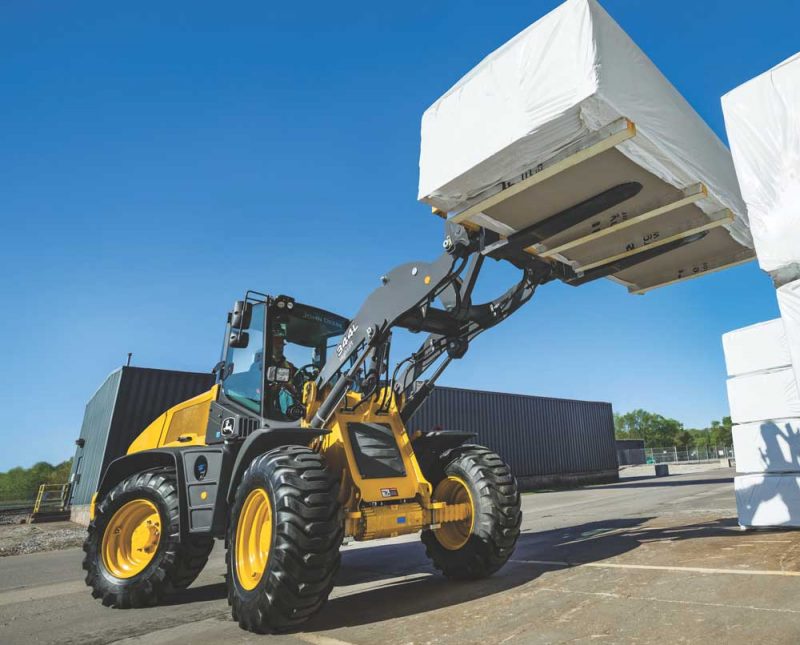
John Deere dove into the compact wheel loader market in 1988 with the 344E, a 16,000-lb, 75-hp loader equipped with a 1.3- or 1.7-cu-yd bucket. The 244E was added in 1991, and additional models were added to the lineup in the early 2000s. Today, John Deere offers five L-Series compact wheel loader models.
“The 204L and 304L feature a low profile that is ideal for navigating around jobsites with narrow openings and low entry ways,” says VanTine. “Our 244L, 324L and 344L models come with the industry-exclusive Articulation Plus steering system that provides tighter turns and improved stability, allowing customers to increase productivity on the jobsite. In addition to articulating, the rear wheels steer as well on Articulation Plus machines. The John Deere 244L, 324L and 344L come with a two-speed hydrostatic transmission with automatic shifting that has a top speed of approximately 23 to 25 mph [depending on the model].”
In January 2019, John Deere fully updated all of its compact wheel loader models in the L-Series. For example, all L-Series models received a new hydraulic joystick with integrated EH auxiliary hydraulic controls. An LED work light option is also new with the L-Series.
“The 244L, 324L and 344L have a new larger cab with improved visibility and new features like throttle lock, rimpull control and a new monitor,” says Van Tine. “The 244L, 324L and 344L also have a redesigned cooling package with improved efficiency and cleanout. Finally, the 344L high-lift option was designed to provide operators with increased hinge pin height and dump clearance. It’s important to provide our customers with increasingly versatile compact construction equipment to enable them to work with the variety of trucks, trailers, wagons, bins or hoppers they may encounter on any jobsite.”
Volvo
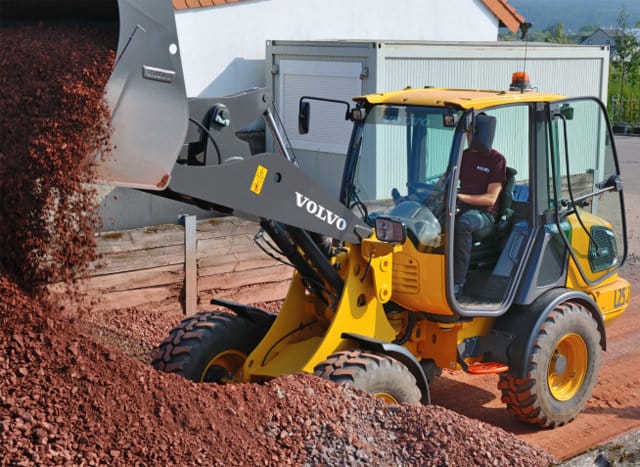
In 1991, Volvo CE joined the wheel loader race by acquiring Zettelmeyer, which had been in the market since 1950. Now Volvo manufacturers six models built on three platforms: the L20H and L25H, the L30G and L35G and the L45H and L50H.
“Some of the features that make Volvo stand out include the design of the center point articulated oscillating joint, which provides excellent stability over uneven ground. Also, 100 percent differential locks are standard in both the front and rear axles, which increases traction in tough conditions,” says John Comrie, compact equipment product manager for Volvo CE. “Volvo’s unique Torque Parallel [L45/50] linkage delivers high breakout torque and excellent parallel movement throughout the entire lifting range. Volvo offers independent pumps for steering and work hydraulics, meaning attachments like snow blowers or grinders never get bogged down when steering. Reversible cooling fans can be switched manually or set to come on automatically to ensure radiators are kept clean in harsh environments.”
Perhaps the most exciting compact wheel loader news from Volvo CE came in April 2019 when the company announced the arrival of its L25 electric wheel loader. According to Volvo, the L25 is part of the company’s effort to support customers who are moving toward a more environmentally conscious, sustainable future. Volvo CE is also the first manufacturer to commit to a full range of electric compact excavators and wheel loaders.
“The L25 has zero exhaust emissions and offers significantly lower noise levels, reduced energy costs, improved efficiency and less maintenance requirements compared to its conventional counterpart,” says Comrie. “It operates on lithium-ion batteries that allow for eight hours of operation in regular applications. The L25 also includes two dedicated electric motors — one for the drivetrain and one for the hydraulics. Decoupling these subsystems leads to higher efficiency. It features an onboard charger to enable overnight charging via a regular household socket.”
Takeuchi-US
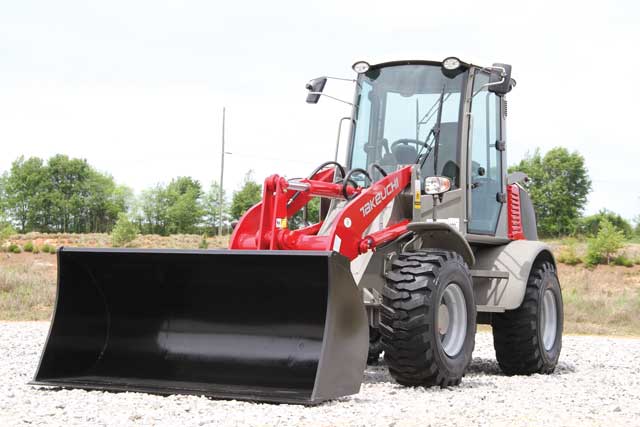
Takeuchi-US first entered the compact wheel loader market in 2006 with the TW50, TW60 and the TW80. The company currently offers three center pin oscillation wheel loaders with Z-bar-type loader linkage — the TW60 Series 2, TW80 Series 2 and TW95. Both the TW60 Series 2 and the TW95 were released in 2018.
According to Lee Padgett, product manager at Takeuchi-US, higher rated operating capacities, faster travel speeds, longer wheel bases and a higher vantage point from the cabin for greater jobsite visibility are just some of the features that make the company’s wheel loaders stand out.
He adds, “A host of standard cabin features including a deluxe air ride suspension seat [TW80/TW95 only], better fuel economy, Tier 4 Final engines without the use of a DPF filter [TW80/TW95 only] and less maintenance on their drive train due to the machine not having to make spin turns make these new wheel loaders very attractive to a wide variety of operators for a wide variety of applications.”
Hitachi

Hitachi’s entry into the compact wheel loader market started back in 2010 when a joint venture was formed between Kawasaki Heavy Industries and Hitachi Construction Machinery to further develop the global scope of the Kawasaki brand wheel loaders. After a few more business deals and a name change, Hitachi Construction Machinery Loaders America Inc. released its own brand of wheel loaders in 2018.
“Our legacy models, the Kawasaki compact loaders, came to the North American market in 1985,” says Sam Shelton, marketing manager for Hitachi. “As Hitachi, we have introduced the ZW30-5B, ZW50-5B, ZW80-5B and ZW120-6 to the market. All of the models are DPF free and have been well received.”
All of Hitachi’s compact wheel loaders feature easy cab access on both sides of the machine. The wheel loaders also boast wide-open engine hoods and side-by-side aluminum radiators and aluminum oil coolers, which provide easy access for maintenance and cleaning. In fact, ease of maintenance was just one of the features that helped the Hitachi ZW50 and ZW80 wheel loaders earn a 2019 Innovative Iron Award from Compact Equipment.
Visibility has always been a big pro for wheel loaders and Hitachi’s models excel in that category.
“Our cabs have the best visibility on the market,” says Nathan Little, Hitachi product specialist. “The pillarless design offers unobstructed visibility. The front has floor-to-ceiling windows. The cab enables panoramic views via the addition of a lower window.”
So, what’s next for Hitachi? Little points out that its Tier 4 Final machines will be making their debut this year. The ZW30-5B will be released this month, and the ZW50-5B and ZW80-5B will roll out in December.
Oscillation and Loader Linkage
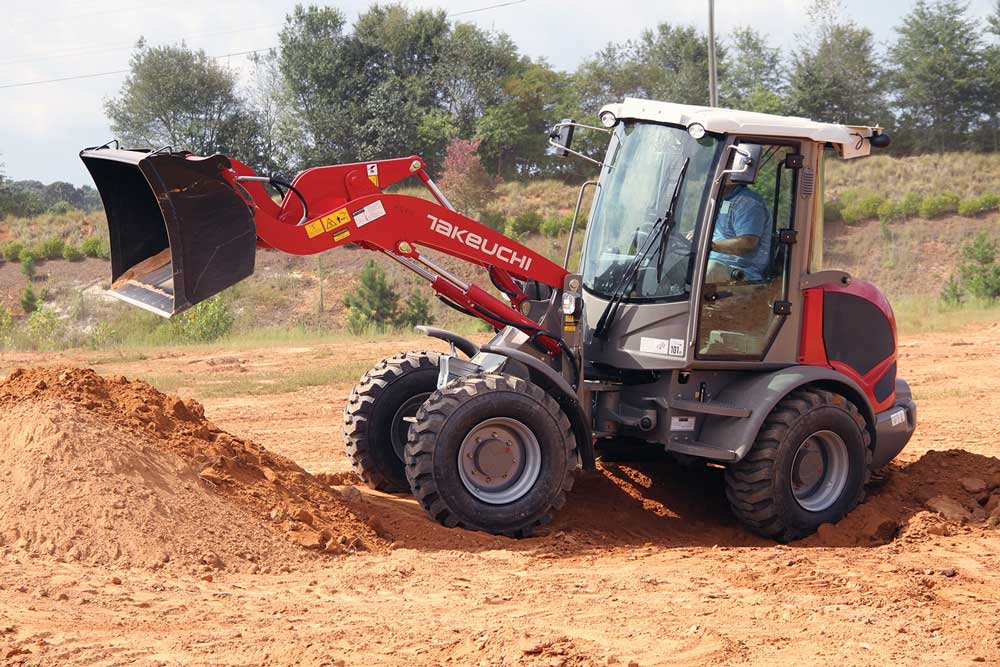
Takeuchi’s Lee Padgett Points Out Two Important Features to Consider
So, you want to add a wheel loader to your fleet? Great! But before you hurry out and buy one, it’s important to know your application and the work you expect to perform. Identifying that will help a dealer assist you in picking out the right oscillation and loader linkage types you need to tackle the jobs you plan to encounter.
“There are two different oscillation types, the first being center pin which tends to provide a more stable operator platform. The second is rear oscillation, which keeps the front linkage more parallel to the ground when digging,” says Lee Padgett, product manager at Takeuchi-US. “Another consideration is the type of linkage you will need. Parallel lift uses two cylinders and provides better visibility to the middle of the work area and when lifting keeps the material parallel to the ground, making it a good choice for working with pallets. Z bar linkage machines use a single cylinder, which requires less maintenance and produce greater bucket breakout forces, making them better candidates for excavation and grading applications.”

